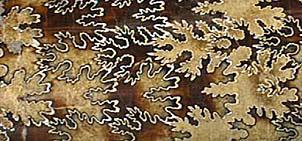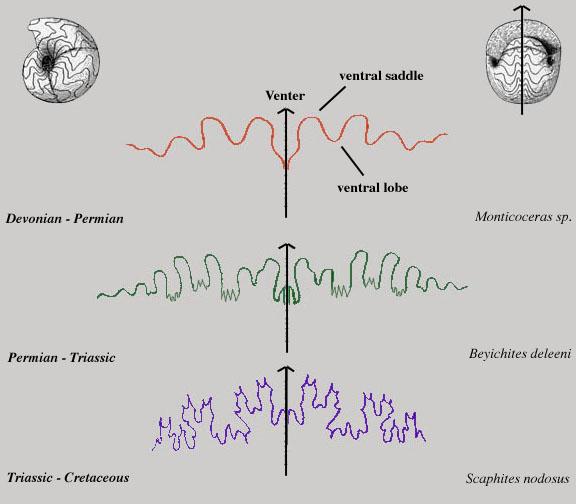(Ammonites)

Baculites compressus
All ammonoids show some type of suture pattern. The term "suture pattern" refers to the featured line that makes contact with the septa and the interior of the aragonitic shell. Ammonoid suture patterns show more complexity in comparison to the nautiloids whose sutures are comparatively simple. In the earliest forms of ammonoids (Devonian to Carboniferous) the suture pattern displays a very simple form of a gently weaving line often containing three lobes (as barely discernible on the specimen of Ternoceras uniangulare in the Devonian case). A lobe is a distinctive pattern within the sutures as shown in the figure below. The saddle is a term used of describe the concave part of the suture that points downward toward the aperture (opening) of the shell. From the Triassic to the Cretaceous ammonoids developed more complex sutures with many lobes and saddles, as can be seen in the more complex pattern of Beyrichites deleeni (Triassic case) of intermediate complexity and the very complex pattern of Placenticeras intercalare (Cretaceous). This trend towards suture complexity through time has been a convenient tool used for classification and dating ammonites and the rocks in which they have been found.
Transitional Depiction of Three Different Sutures within Ammonite Shells
(Devonian-Cretaceous)

Ammonite Geologic Abundance: Devonian - Cretaceous ® Ammonoid/Nautaloid Comparative Morphology
